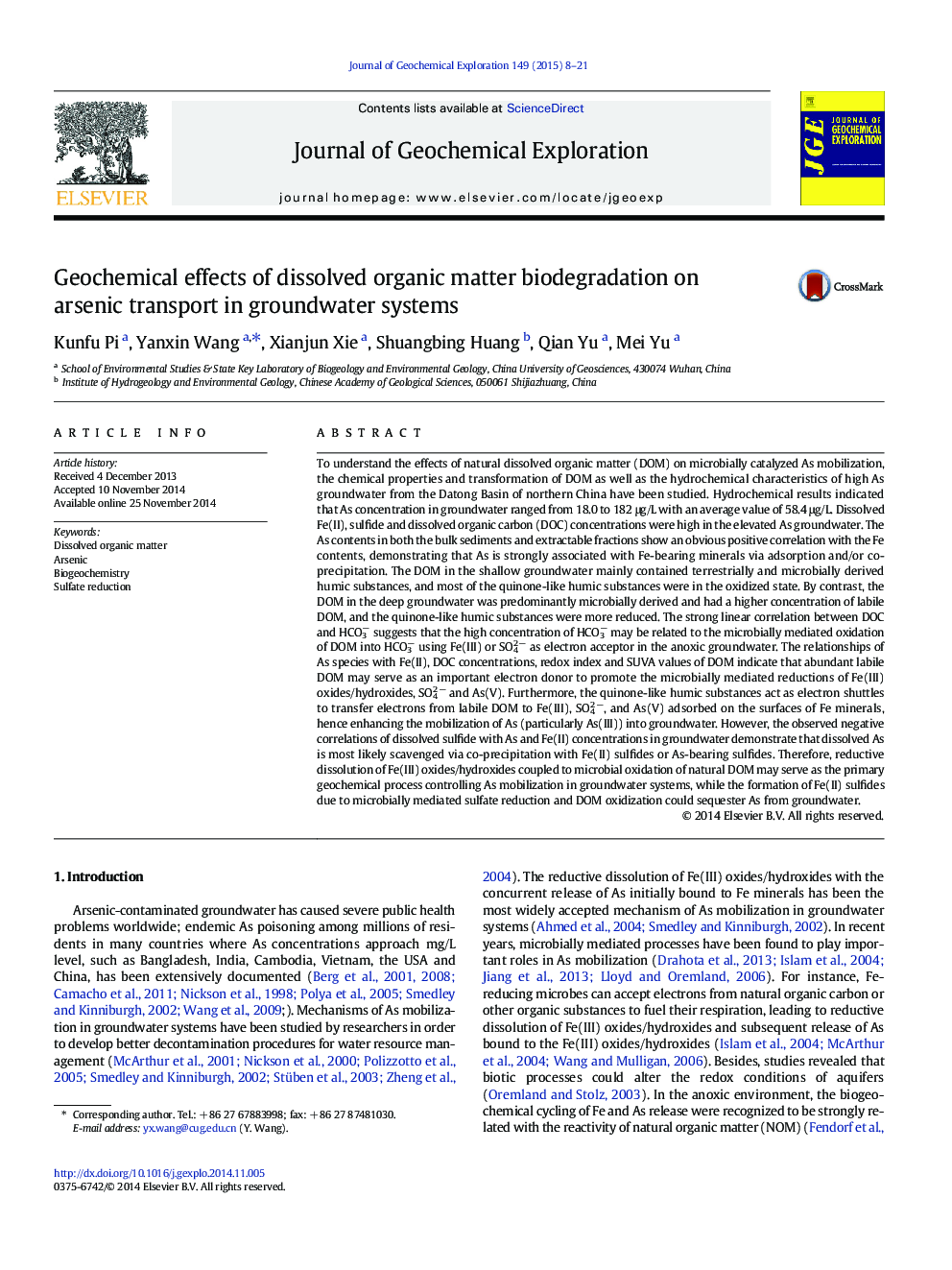| کد مقاله | کد نشریه | سال انتشار | مقاله انگلیسی | نسخه تمام متن |
|---|---|---|---|---|
| 4457187 | 1620910 | 2015 | 14 صفحه PDF | دانلود رایگان |
• The effect of dissolved organic matter (DOM) on As transport has been identified;
• Coupling the biodegradation of DOM with reductive dissolution of minerals promotes As mobilization; minerals promotes with of DOM
• DOM biodegradation and sulfate reduction could result in As sequestration.
To understand the effects of natural dissolved organic matter (DOM) on microbially catalyzed As mobilization, the chemical properties and transformation of DOM as well as the hydrochemical characteristics of high As groundwater from the Datong Basin of northern China have been studied. Hydrochemical results indicated that As concentration in groundwater ranged from 18.0 to 182 μg/L with an average value of 58.4 μg/L. Dissolved Fe(II), sulfide and dissolved organic carbon (DOC) concentrations were high in the elevated As groundwater. The As contents in both the bulk sediments and extractable fractions show an obvious positive correlation with the Fe contents, demonstrating that As is strongly associated with Fe-bearing minerals via adsorption and/or co-precipitation. The DOM in the shallow groundwater mainly contained terrestrially and microbially derived humic substances, and most of the quinone-like humic substances were in the oxidized state. By contrast, the DOM in the deep groundwater was predominantly microbially derived and had a higher concentration of labile DOM, and the quinone-like humic substances were more reduced. The strong linear correlation between DOC and HCO3− suggests that the high concentration of HCO3− may be related to the microbially mediated oxidation of DOM into HCO3− using Fe(III) or SO42 − as electron acceptor in the anoxic groundwater. The relationships of As species with Fe(II), DOC concentrations, redox index and SUVA values of DOM indicate that abundant labile DOM may serve as an important electron donor to promote the microbially mediated reductions of Fe(III) oxides/hydroxides, SO42 − and As(V). Furthermore, the quinone-like humic substances act as electron shuttles to transfer electrons from labile DOM to Fe(III), SO42 −, and As(V) adsorbed on the surfaces of Fe minerals, hence enhancing the mobilization of As (particularly As(III)) into groundwater. However, the observed negative correlations of dissolved sulfide with As and Fe(II) concentrations in groundwater demonstrate that dissolved As is most likely scavenged via co-precipitation with Fe(II) sulfides or As-bearing sulfides. Therefore, reductive dissolution of Fe(III) oxides/hydroxides coupled to microbial oxidation of natural DOM may serve as the primary geochemical process controlling As mobilization in groundwater systems, while the formation of Fe(II) sulfides due to microbially mediated sulfate reduction and DOM oxidization could sequester As from groundwater.
Journal: Journal of Geochemical Exploration - Volume 149, February 2015, Pages 8–21
